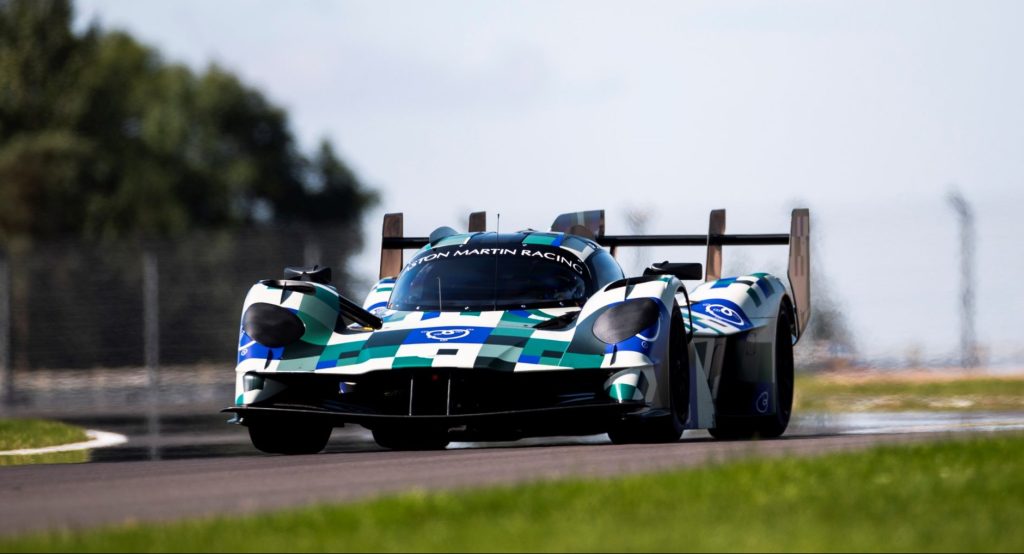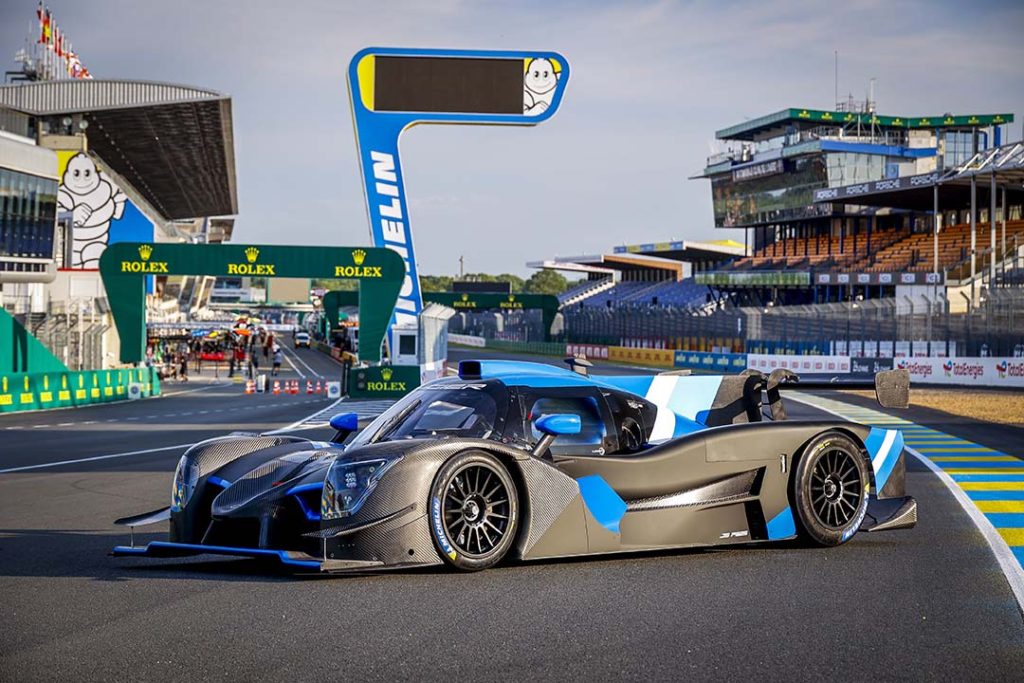Next weekend (January 11-12 2025) the Rossa LM GT will debut at the 24 Hours of Dubai, in an operation run by Swiss private team Graff Racing with Roman Rusinov, Evgeny Kireev, Nikita Mazepin and Harrison Newey as the drivers. Although being listed by international media as an UAE-based company, the company has deep roots in Russia which we will explore in this article.
Prologue: The History of the Marussia B1: A Technical Odyssey of Russian Supercar Innovation
Before getting to the Rossa LM GT, let’s go back a few years in time to the Marussia B1, a bold, albeit unfinished, chapter in automotive history. Its genesis, by its turn, was rooted in the mid-2000s Lada Revolution championship, where high costs and mechanical unreliability prompted participants to seek alternatives.

This call to action led Igor Yermilin, an engineer with a background in motorsport, to develop the Phoenix— an open prototype that combined an aluminum monocoque with a steel frame and pushrod suspension. The car’s powertrain, a 152-horsepower Alfa Romeo 2.0 win Spark engine paired with a Hewland LD200 5-speed gearbox, set the stage for durability and performance.
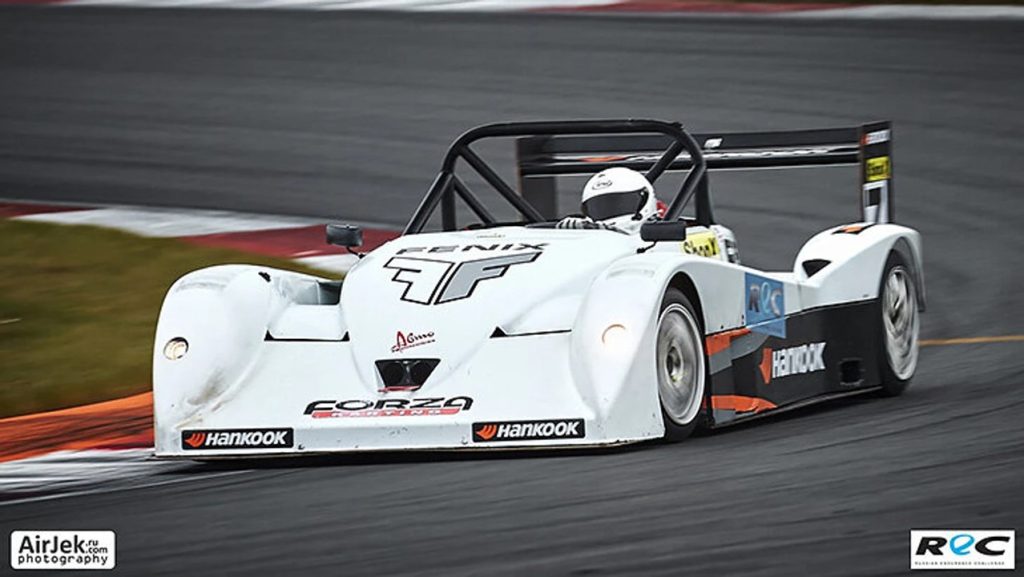
In 2007, Nikolai Fomenko, a Russian actor, musician, and motorsport enthusiast, envisioned a grander purpose for the Phoenix chassis: a road-going supercar with the soul of a race car. This ambition birthed Marussia Motors, a company that sought to combine advanced engineering with striking aesthetics to create a distinctly Russian supercar. The result was the Marussia B1, a vehicle that balanced cutting-edge concepts with practicality.
Engineering Foundations: The Chassis and Monocoque
At its core, the Marussia B1 featured an innovative aluminum monocoque design reinforced with steel subframes, being a reimagined Phoenix chassis. The aluminum structure was crafted using glued and riveted sheets filled with foam to enhance stiffness and prevent material fatigue.
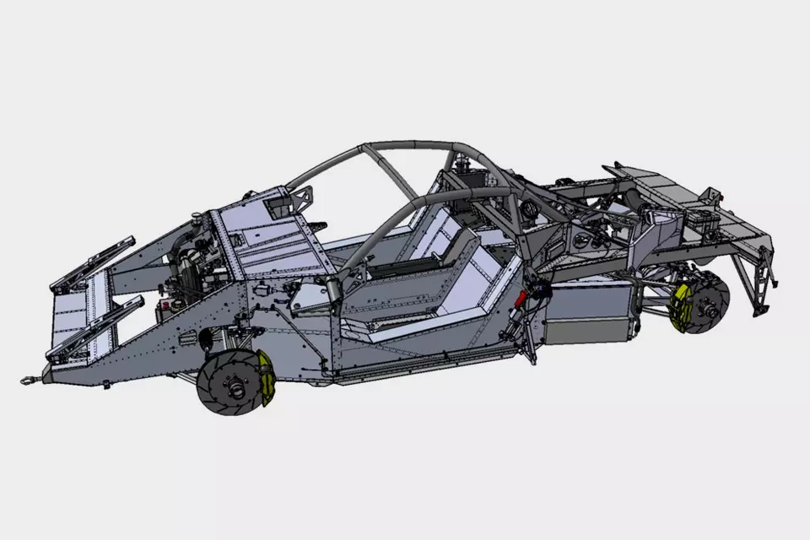
This setup provided 75% of the torsional rigidity of a Nissan GT-R, a benchmark for performance cars. The steel frame doubled as a homologation requirement and an assembly framework for the monocoque.
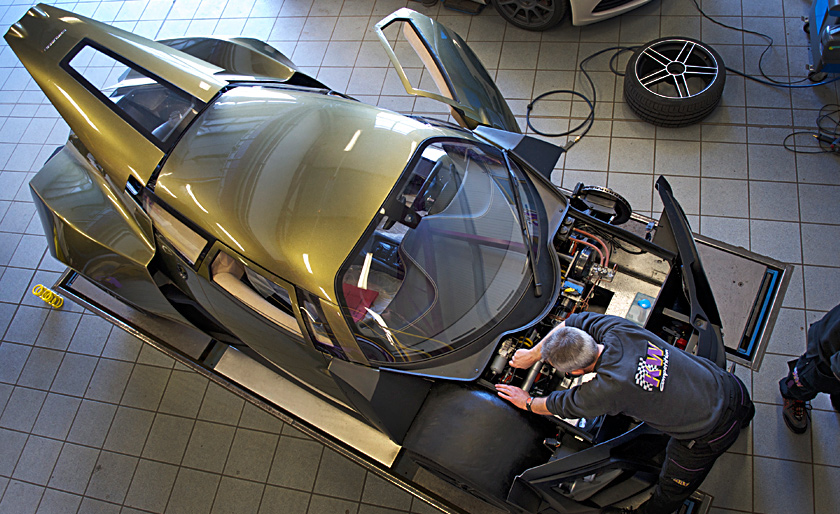
The suspension utilized double-wishbone geometry with pushrod actuated shocks, reflecting its racing lineage. Early prototypes were equipped with St. Petersburg Plaza shock absorbers, which later gave way to adjustable KW components. These could raise the car by 50mm for urban practicality or be fine-tuned for track use, emphasizing the B1’s dual-purpose ethos.
Aerodynamics and Bodywork
The body of the B1, designed by Maxim Shershnev and his team, featured wide, muscular fenders and a low-slung profile, echoing the aerodynamics of Le Mans race cars, and was based on sketches he did for the Toyota Formula GT competition.
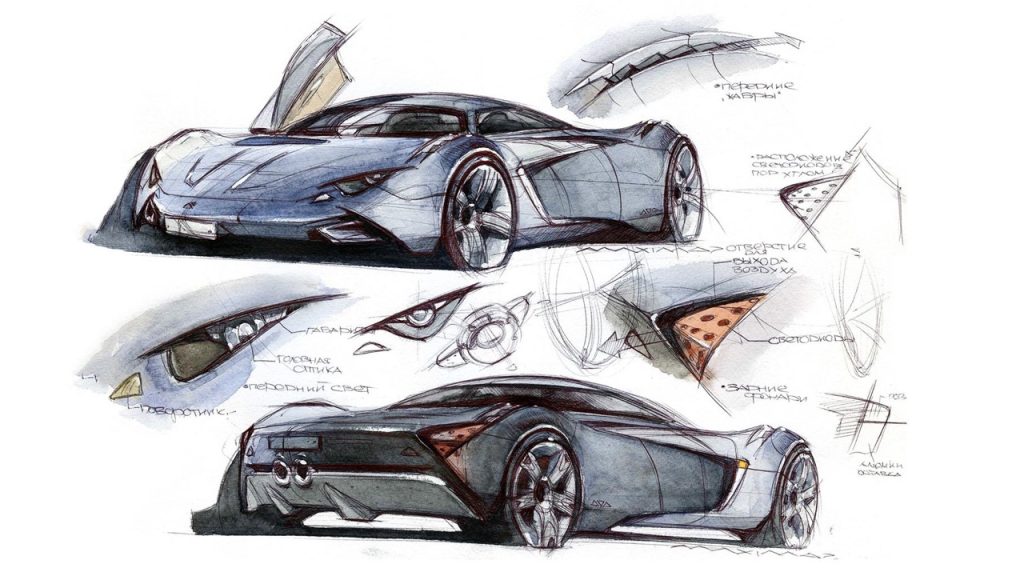
However, the car faced aerodynamic challenges during development. Cooling inefficiencies arose due to compact air intakes, which were initially insufficient for the engine’s thermal management. Similarly, the rear diffuser and fine-mesh grilles restricted airflow, leading to overheating. To address this, later prototypes included larger vents, improved air ducts, and even a rear spoiler to combat lift at high speeds.
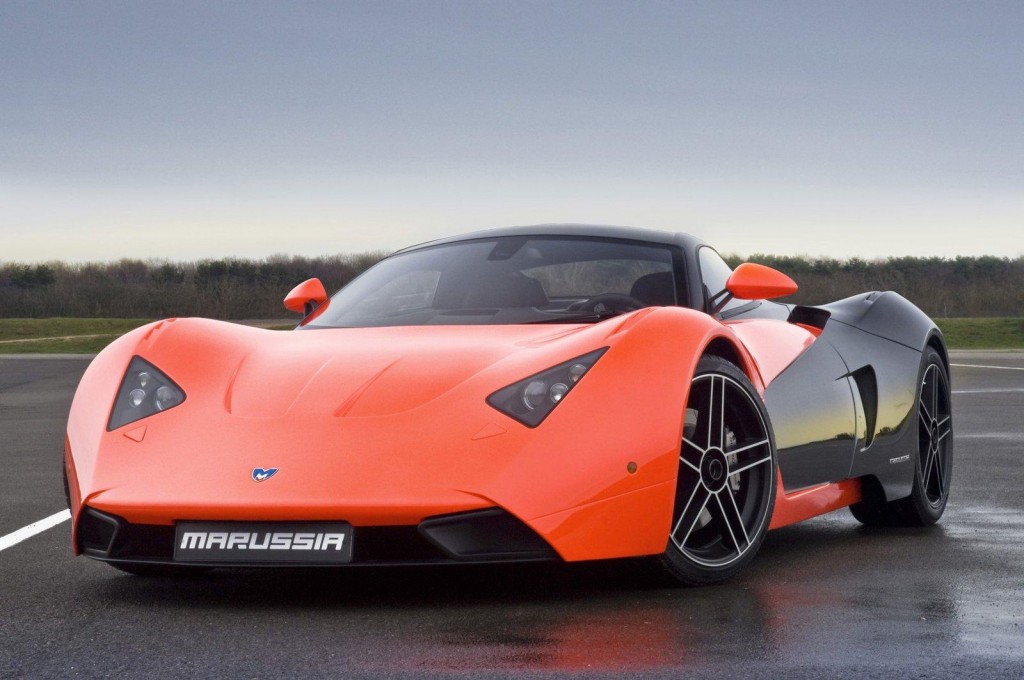
The body panels were initially made of carbon fiber, with plans to transition the aluminum monocoque to carbon for production. However, this proved too expensive and complex, leaving the prototypes reliant on the original aluminum design.
Powertrain Options and Lightweight Philosophy
The B1 was powered by a variety of engines throughout its development, starting with a Nissan-sourced 3.5-liter V6. This engine, producing 240-300 horsepower in different configurations, was paired with a 5-speed Aisin automatic transmission. Higher-performance variants were planned, including a 450-480 horsepower version of the Renault V6 from Formula Renault 3.5 cars and even a 340-horsepower turbocharged GM V6 developed by Cosworth.
Despite its large dimensions, the B1 adhered to a lightweight philosophy reminiscent of Lotus sports cars. Early prototypes weighed just 950kg, while later versions with additional features and luxury elements ranged from 1150 to 1250kg. This focus on low weight gave the car a respectable power-to-weight ratio and agile handling.
Technology and Trimming
The interior of the B1 pushed boundaries with advanced technology. It featured an electronic instrument cluster and multiple screens capable of displaying rear-view camera feeds, movies, or even Skype calls. These were powered by a Zotac video card and ran on a Linux-based system. The interior design also emphasized luxury, with electrically operated seats, doors, and hoods. However, the electronics consumed significant battery power, causing practical issues in daily use.
Development Challenges and Legacy
The Marussia B1 faced numerous obstacles during its development. Components sourced from various manufacturers often clashed. For instance, a Renault Twingo electric power steering system overheated under load due to the B1’s unique demands. Similarly, SKF single-nut hubs borrowed from Ferrari required redesigning due to intellectual property issues.
Crash testing also exposed weaknesses. While the aluminum monocoque showed promise, steel monocoque prototypes suffered catastrophic failures during crash tests. Production delays, funding constraints, and strained supplier relationships further hindered the project. Despite these challenges, the Marussia B1 marked an ambitious step forward for Russian automotive engineering. Its technical innovations, such as lightweight construction and advanced electronics, showcased a bold vision. However, mismanagement and overexpansion prevented it from achieving commercial success.
Today, the Marussia B1 remains a fascinating relic of what might have been. A few prototypes still exist, including chassis #6, retained by Yermilin. This prototype, dubbed B1 GT was equipped with proper cooling, a lightweight monocoque, and other refinements, symbolizes the untapped potential of the Marussia dream.
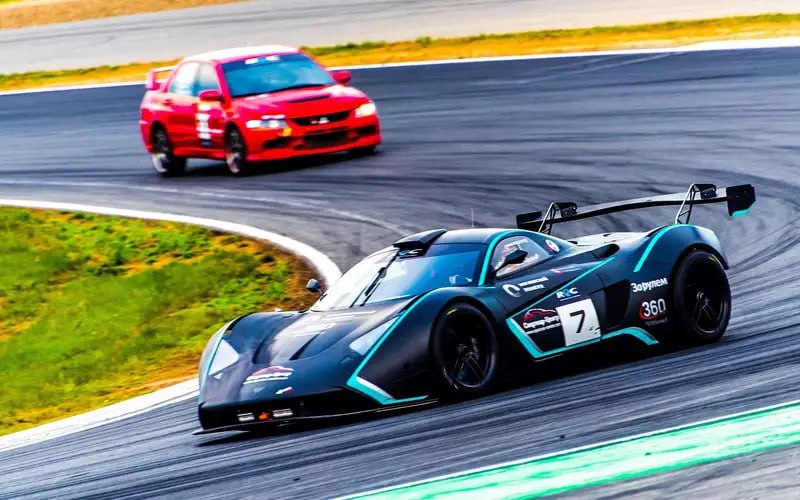
That, however, was not the end of the road for the Marussia, as the race car resurfaced in 2022 for the Russian Endurance Championship (REC), operated by the IY Engineering team (IY from Igor Yermilin), a team composed of students from the Polytechnic University of Moscow (from where Yermilin himself graduated in 1975) and former Formula SAE team members. This effort also operated simultaneously an updated Phoenix prototype in REC between 2022 and 2023.
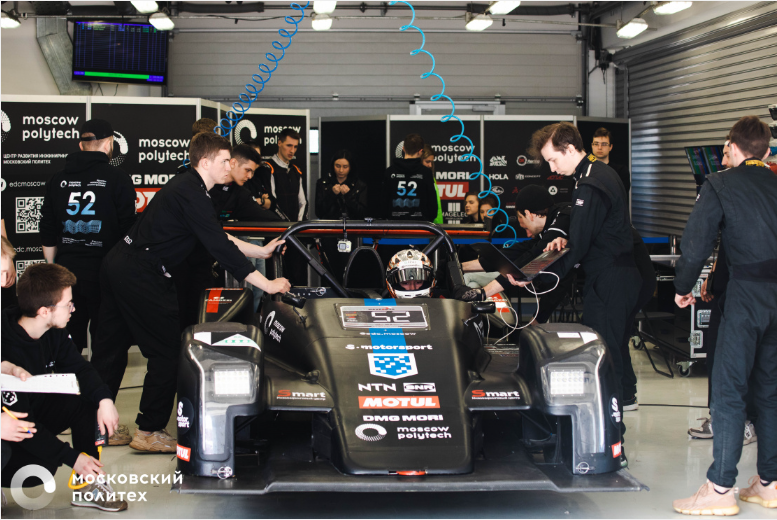
In 2023, even the Marussia B2 appeared in some rounds of the REC, operated by NRG Motorsport with Nikita Nikitin, Alexey Krylov and Mikhail Mikhin at the wheel.
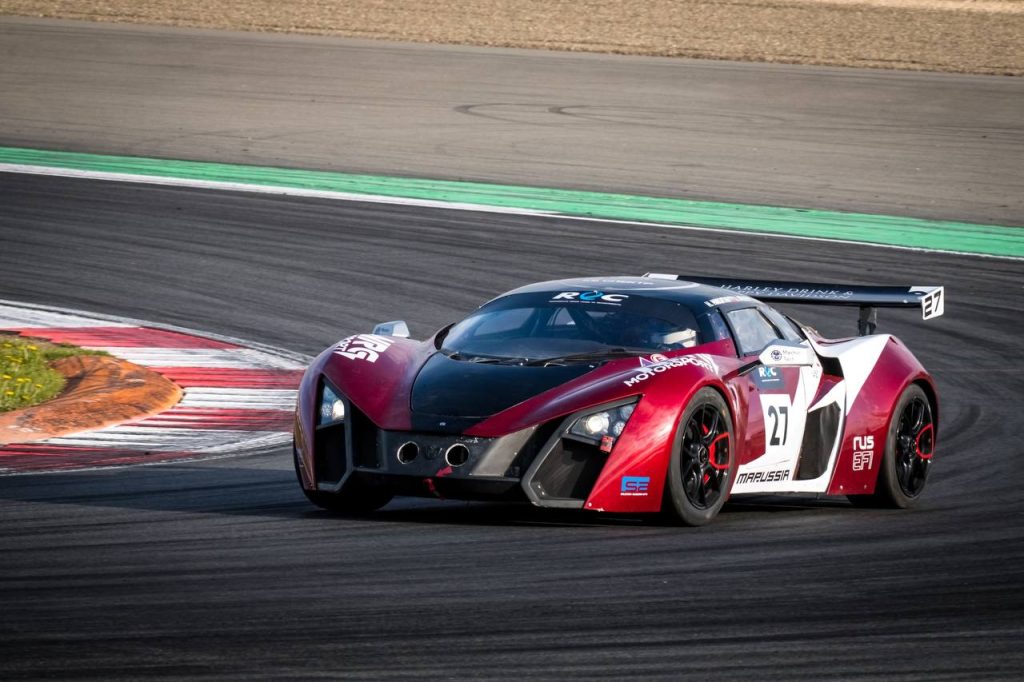
The Rossa GT LM Concept
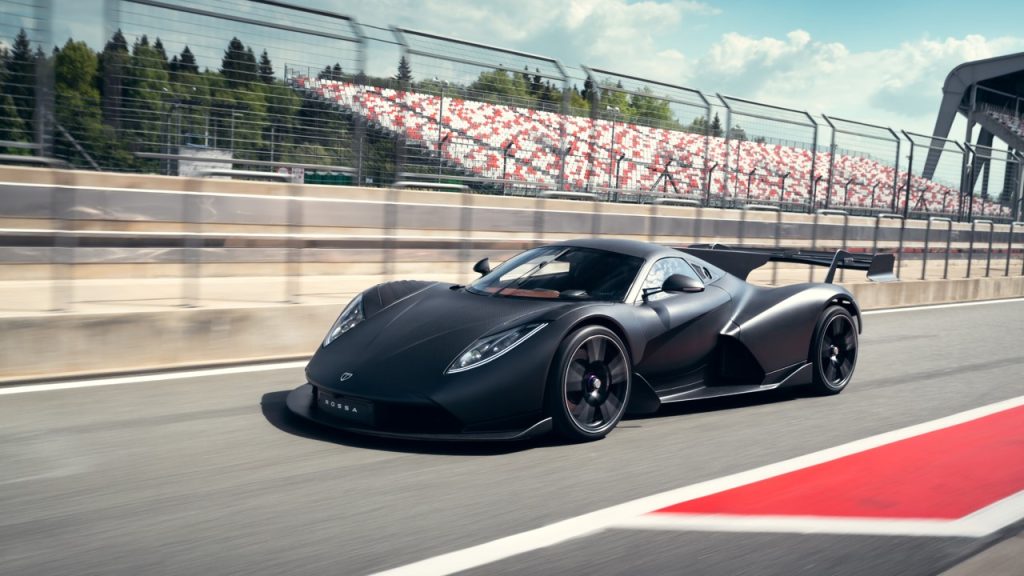
Then, moving forward to 2022, enters Romain Rusinov, former WEC champion and Le Mans 24 Hours winner. The name Rossa, comes from Russian Sports Cars, and the company came from Rusinovs desire to keep racing. After the banning of Russian racers from the global stage due to the situation with Ukraine, Rusinov focused on the local Russian Endurance Championship, entering a Ligier JS53 in the CN Pro Class, against much slower competition from Shortcuts (Lotus 7 replicas) and Mitjets. With foreign parts ever harder to get due to the sanctions to Russia, came forth the decision to develop a car to take on the GT class.
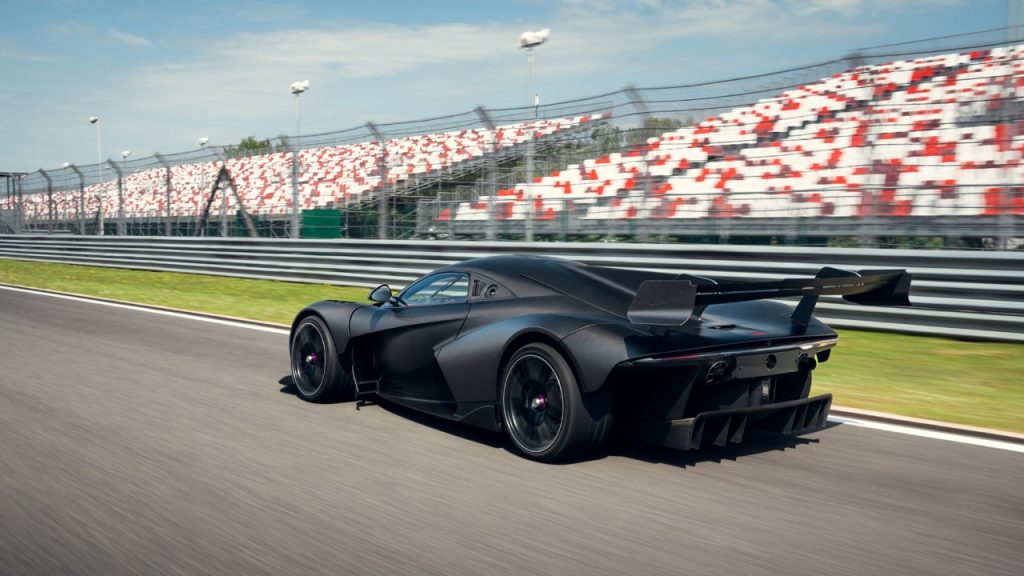
The development of the first car had the hand of Igor Vaselyevich Yermilin, former chief engineer of the Marussia B1, and although based on the backbone of the Marussia B1, the Rossa has a different engine, extended wheelbase, new body panels, aerodynamic and interior. The design, by the way, was inspired by the Maserati MC12 and done by Valdimir Plekhanov (former Marussia and Lada Vesta and XRAY) and Ivan Borisov (former Aurus, Volgabus and Marussia).
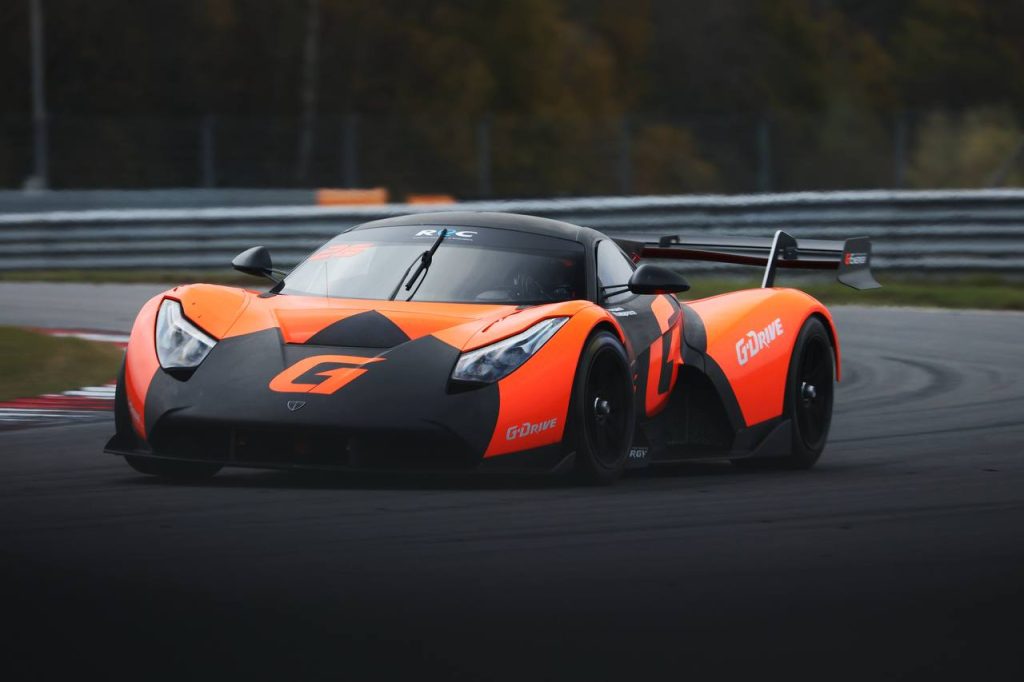
For example, instead of the Renault powerplant from the Marussia, the Rossa Concept GT LM is powered by a 5.2 Liter V8 engine, producing an impressive 680 horsepower. Although Rossa does not disclaim the source of this engine, it is not hard to connect the dots that this is an Audi powerplant, similar to that of the Audi R8.
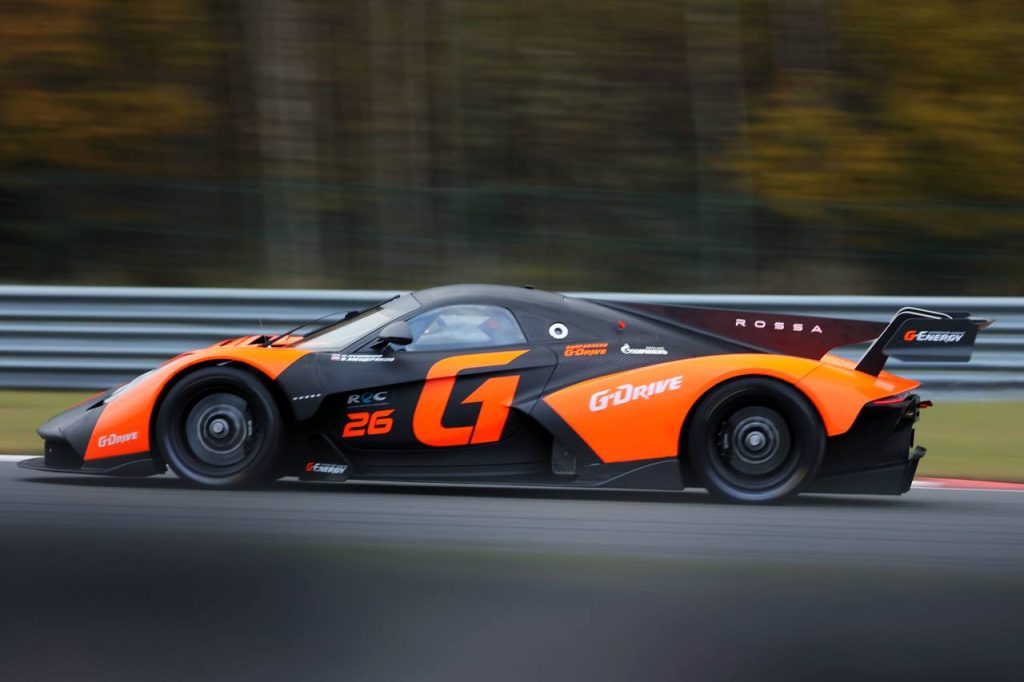
Many of the components, however, are from the international market, such as the GT3 wheels and brakes (six-piston AP in the front with 4-piston at the rear), and all exterior panels are made in carbon fiber, including the rear wing and diffuser. The aerodynamic package is said to provide 1.500 kg of downforce at 300 km/h, more than the 1.100 kg the car weighs.
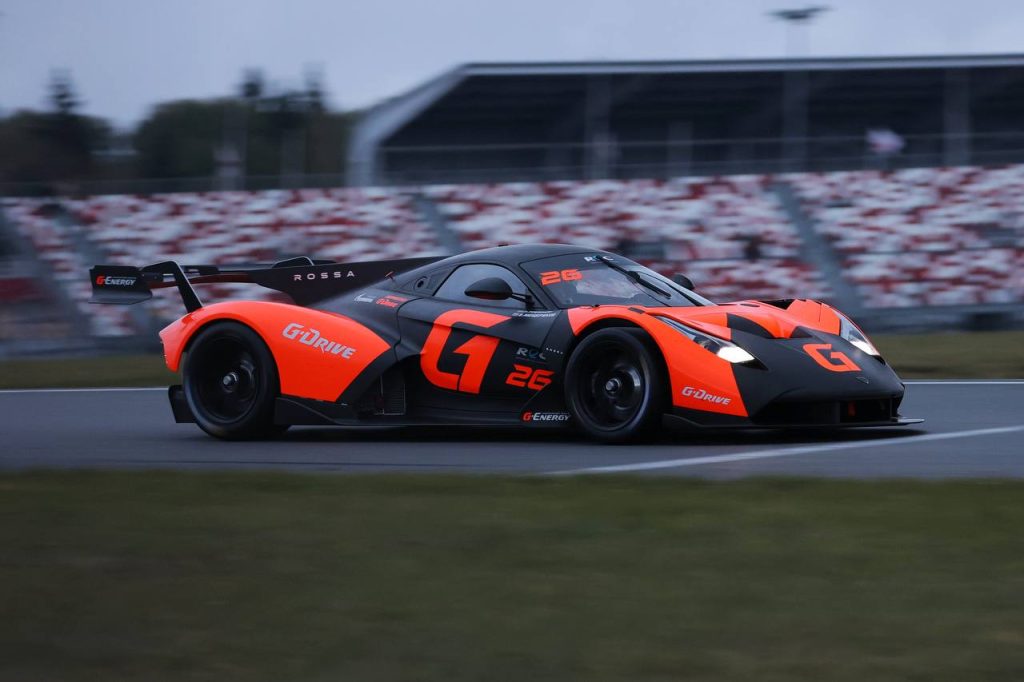
In this configuration, the Rossa LM GT Concept debuted at the REC after some delays. The original plan was to debut at the fourth round, but only at the fifth and last round at the Moscow Raceway, qualifying first in the GT Pro class but suffering from many issues during the race, yet still managing to complete the race and getting valuable information for the car development.
The Rossa LM GT: A Russian Supercar Takes on the Global Stage
From Concept to Competition
The Rossa LM GT made its initial track appearance in October 2024 during the Russian Endurance Racing Series (REC) at Moscow Raceway, however the car featured in that event was still a concept model. The final racing version, refined for the GTX (Special GT) class, will be revealed at the Dubai 24 Hours, and will have little to no resemblance to the Concept model.
Rusinov has larger aspirations for the Rossa brand. The LM GT is being certified under GT2 class regulations, setting the stage for participation in global racing series. This step signifies the dual focus of Rossa: dominating motorsport while also creating a road-legal supercar.
Powertrain Evolution: Judd V10 Performance
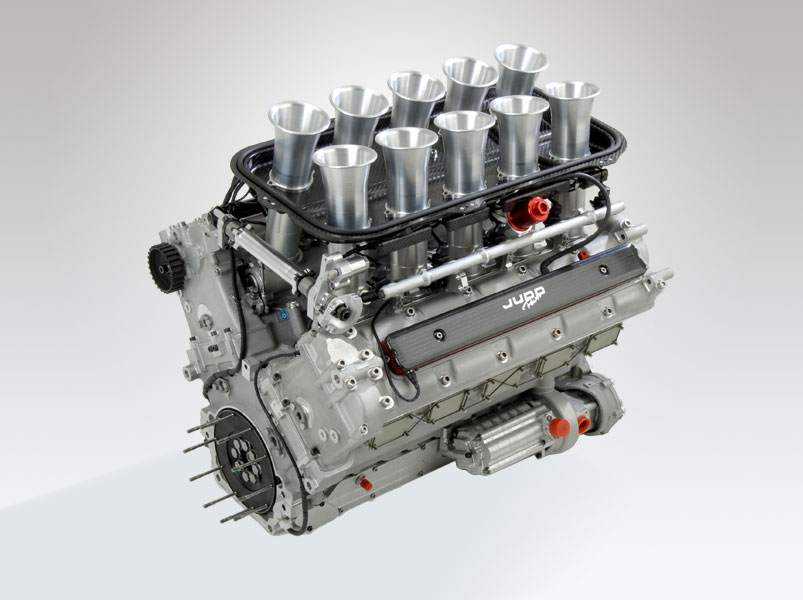
The racing version of the Rossa LM GT will feature a Judd 5.5-liter V10 engine, a power unit revered for its pedigree in LMP1 prototypes. Known for its high-revving, naturally aspirated performance, the Judd V10 provides 680 horsepower, ensuring breathtaking speed and agility, especially considering it weighs only 140 kg, which alone is a 100 kg reduction over the Audi V10 from the Concept car. The engine was paired with a sequential transmission, propelling the car from 0 to 100 km/h (0 to 62 mph) in just 3.2 seconds, reaching an alleged top speed of 380 km/h (236 mph), delivering race-winning potential.
Refined Dimensions and Aerodynamics
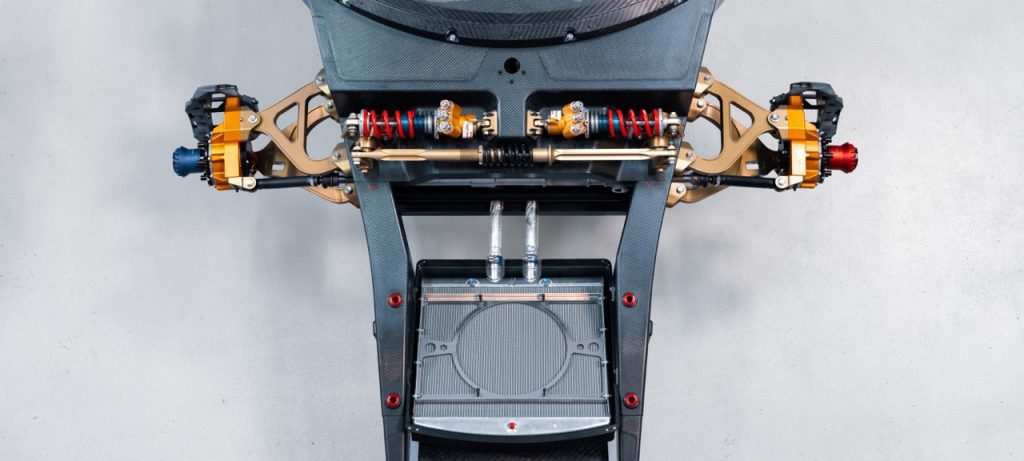
The Rossa LM GT has undergone substantial dimensional changes during development, optimizing both performance and driver comfort. The car’s overall length has increased, particularly at the front, enhancing downforce and stability. It is now six centimeters wider at the front, bringing it to a uniform width of two meters at both ends. These changes align the Rossa with the proportions of iconic supercars like the Lamborghini Aventador.
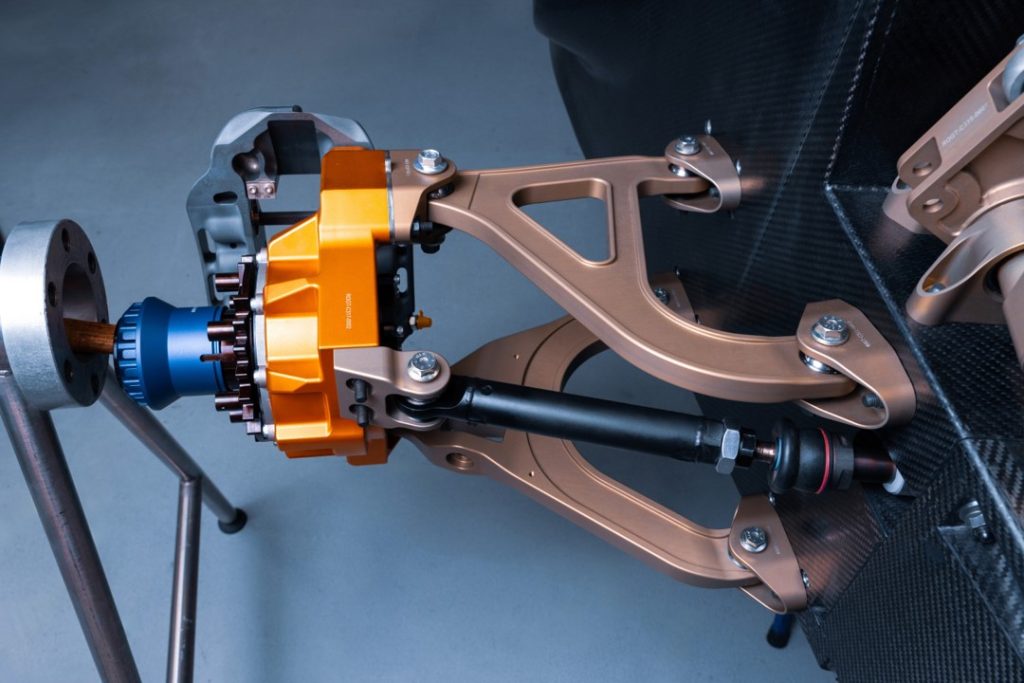
Interior space has also been significantly improved. Legroom has increased by 22 centimeters, headroom by 14 centimeters, and overall cabin length by 40–45 centimeters. These modifications create a more accommodating cockpit, crucial for endurance racing.
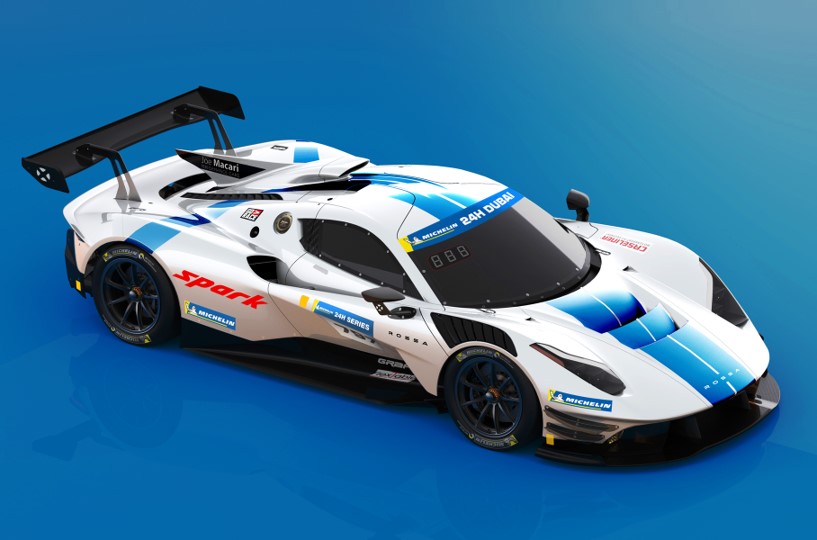
Aerodynamically, the Rossa GT LM features a redesigned front suspension with aluminum levers bolted directly to the monocoque, in comparison to the steel levers assembled on subframes of the GT LM Concept, enhancing rigidity and weight distribution. The extensive use of carbon fiber throughout the monocoque chassis and body ensures a lighter and more competitive car.
From Track to Road
While the LM GT prepares for its racing debut, Rossa Cars is simultaneously developing a civilian version of the supercar. This road-legal model will incorporate many of the racing car’s innovations, offering a balance of high performance and daily usability.
The original butterfly-style doors, reminiscent of the McLaren F1 and Ferrari Enzo, have been replaced with upward-swinging doors akin to those on modern McLaren supercars. The new upward-opening mechanism simplifies entry and exit without compromising the car’s dramatic presence.
Currently, two prototypes are in development: the racing LM GT and the road-legal variant. The racing model includes a large rear wing, a full safety cage, and numerous race-specific components. The adaptable chassis design can also accommodate hybrid powertrains, further broadening the car’s appeal.
A New Era for Russian Motorsport
The Rossa LM GT embodies Roman Rusinov’s vision of a world-class supercar that excels in GT3, GT2, and GTX competitions. Its engineering innovations and competitive pedigree signal a bold step for Russian motorsport on the global stage.
The upcoming Dubai 24-hour marathon will be a defining moment for the Rossa LM GT. With the precision of Graff Racing and the proven performance of the Judd V10 engine, this supercar has the potential to challenge established names in endurance racing.
As Rusinov stated, “The car’s participation in races depends on the teams, their clients, and advertisers. But for Rossa, this is just the beginning.”
Acknowledgments
I’d like to extend gratitude to our friend Oleg Stozhkov, our partner in bringing content to the Russian motorsports community. He has generously shared many links and insights, invaluable in building this article on the Rossa LM GT.
Sources
Lada Revolution: The History of the Russian Racing Car. Available at: https://autohs.ru/avtomobili/legkovye/lada-revolution-istoriya-rossijskogo-gonochnogo-avtomobilya.html.
Hidden threat The Story of How Marussia Was Born – The Supercar We Lost. Episode I. Available at: https://motor.ru/stories/marussia-1.htm.
Attack of the Clones The story of the birth and death of Marussia – the supercar we lost. Episode II. Available at: https://motor.ru/stories/marussia.htm.
Marussia Motors. Available at: http://int.kw-suspension.com/int/kw_partners_marussia.php.
Moscow Poly Tested Its ‘Fenix’ Racing Car. Available at: https://mospolytech.ru/en/news/moscow-poly-tested-its-fenix-racing-car/.
Did you think Marussia was dead? No, it’s not – it’s taking to the start line of the “Russian Le Mans” with a 420 hp Audi engine. Available at: https://www.sports.ru/automoto/blogs/3063221.html.
The Marussia GT sports car is back – we have details! Available at: https://www.zr.ru/content/news/956960-sportkar-marussia-gt-vozvrashchae/.
Moscow Polytechnic University Becomes Engineering Base for Revival of Marussia GT Supercar. Available at: https://mospolytech.ru/news/moskovskiy-politekh-stal-inzhenernoy-bazoy-vozrozhdeniya-superkara-marussia-gt/.
What is this Rossa made of: the first test of a supercar from Russia. Available at: https://auto.ru/mag/article/superkar-pridumannyy-v-rossii-my-na-nyom-poezdili-i-uznali-vsyo/?utm_referrer=https%3A%2F%2Fwww.google.com%2F.
First look at the racing version of the Rossa supercar The debut international race for the “combat” Rossa LM GT will be the Dubai 24 Hours marathon. Available at: https://motor.ru/news/rossa-lm-gt-28-11-2024.htm.
Pictures for adults. How the Rossa supercar has changed six months after its premiere. Photo post. Available at: https://auto.ru/mag/article/kartinki-dlya-vzroslyh-kak-izmenilsya-rossiyskiy-superkar-rossa-cherez-polgoda-posle-premery-fotopost/.

